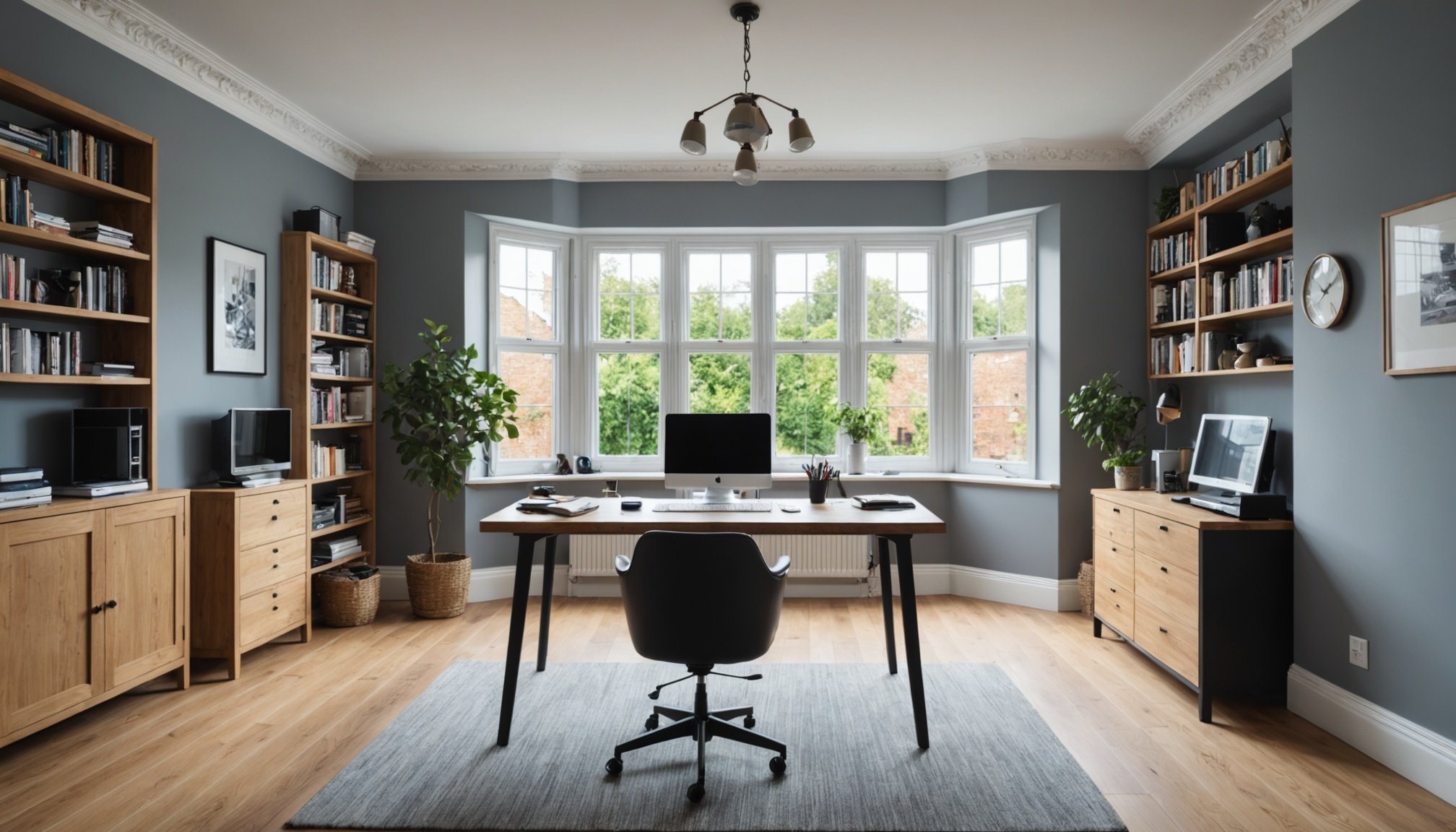Unlocking Profits: The Financial Advantages of Transforming a UK Commercial Property into Residential Homes
In the ever-evolving UK real estate market, one of the most lucrative and socially beneficial trends is the conversion of commercial properties into residential homes. This process, often referred to as commercial to residential conversion, offers a myriad of financial advantages and contributes significantly to addressing the housing shortage. Here’s a detailed look at why this transformation is a smart move for property developers, investors, and the community at large.
A Growing Demand for Housing and the Role of Commercial to Residential Conversion
The UK, particularly cities like London, is experiencing a steady population growth, which has led to an unprecedented demand for housing. The need for affordable and modern homes in urban areas is at an all-time high. Converting commercial properties into residential units is one of the most effective ways to alleviate this housing shortage.
In the same genre : Essential Guide: Step-by-Step Process for First-Time Buyers to Obtain a Low-Interest Mortgage in the UK
“London’s population continues to grow at a steady pace, and with it, the demand for housing, especially affordable homes, is at an all-time high,” notes a real estate expert from London[1].
Commercial buildings that were once underutilized or left vacant can be transformed into vibrant, modern homes. This not only meets the demands of an expanding urban population but also revitalizes underdeveloped areas. For instance, converting empty office buildings, retail spaces, and warehouses into residential units can breathe new life into neglected parts of the city.
Have you seen this : Unlocking Profits: The Financial Advantages of Investing in UK Properties for Co-Living Spaces
Government Incentives and Easier Regulations for Commercial to Residential Conversion
The UK government has been actively encouraging commercial to residential conversions through various incentives and regulatory relaxations. Since 2015, changes to the General Permitted Development Order (GPDO) have simplified the process of changing a building’s use from commercial to residential[2].
“One significant factor contributing to the increased appeal of commercial to residential conversion is the relaxation of planning regulations,” explains a real estate analyst. “The government has eased restrictions surrounding these conversions, allowing property developers to skip some of the typical bureaucratic hurdles associated with turning a commercial building into a residential property[1].”
Here are some key government incentives:
- Relaxed Planning Regulations: Many commercial to residential conversions now fall under permitted development rights, meaning developers no longer need full planning permission.
- Tax Reliefs and Grants: The UK government offers tax reliefs and grants for developers engaging in these conversions, providing a financial incentive to convert vacant commercial spaces into homes.
- Prior Approval: While planning permission may not be required, prior approval from the local authority is often necessary, especially for properties in sensitive locations.
Lower Costs, Higher Returns on Commercial to Residential Conversions
One of the most attractive aspects of converting commercial properties into residential spaces is the potential for lower initial costs and higher returns on investment.
“Commercial properties—especially those located in less prominent or formerly industrial areas—are often more affordable than residential real estate in prime locations,” highlights a property investment expert. “As a result, developers and investors can acquire properties at a lower entry price, which makes the conversion process more financially feasible[1].”
Here are some key financial benefits:
Lower Initial Costs
- Affordable Acquisition: Commercial properties are often cheaper to purchase compared to residential properties in the same area.
- Reduced Planning Costs: With relaxed planning regulations, the cost of obtaining necessary permissions is significantly reduced.
Higher Returns
- High Demand: The demand for housing in central, urban locations means that landlords and property owners can charge higher rents or sell the units for a significant profit.
- Long-Term Profitability: The ongoing demand for city living ensures that these properties will remain in high demand, maximizing the potential for long-term profit.
Step-by-Step Guide to Converting Commercial to Residential Properties
Converting a commercial property into a residential one involves several key steps:
Step 1 – Check Your Property’s Eligibility
- Research the specific location to see if the conversion is feasible. This might involve checking with the local planning department or online resources[2].
Step 2 – Identify the Building’s Use Class
- Determine the building’s current use class (e.g., Class A for shops, Class B for offices) and apply for a change of use if necessary[2].
Step 3 – Get Planning Permission (If Required)
- Check if the project falls under permitted development rights or if full planning permission is needed. Even if planning permission isn’t required, prior approval from the local authority may be necessary[2].
Step 4 – Budget for the Conversion
- Plan carefully for the costs involved, including planning permission fees, prior approval fees, stamp duty, legal fees, and renovation costs. It’s wise to set aside extra funds for unforeseen expenses[2].
Step 5 – Secure Financing
- Explore various financing options such as development finance, bridging loans, or self-build mortgages. Consult with a qualified mortgage broker specializing in commercial-to-residential conversions[2].
Financial and Tax Implications
When considering a commercial to residential conversion, it’s crucial to understand the financial and tax implications.
Capital Gains Tax
- If you are selling a commercial property to convert it into residential units, you may be liable for capital gains tax. However, incorporating your business into a limited company can provide some tax relief[2].
Incorporation Relief
- Converting a commercial property through a limited company can offer incorporation relief, reducing the tax burden on capital gains.
Buy-to-Let and Rental Income
- Once converted, these properties can be rented out, providing a steady stream of income. This makes them an attractive option for buy-to-let investors.
Practical Insights and Actionable Advice
Here are some practical insights and actionable advice for those considering a commercial to residential conversion:
Conduct Thorough Research
- Before embarking on a conversion project, conduct thorough research on the property’s eligibility, local market demand, and potential returns on investment.
Work with Professionals
- Collaborate with experienced architects, engineers, and mortgage brokers who specialize in commercial-to-residential conversions to ensure the process is smooth and profitable.
Plan for the Future
- Consider the long-term implications of the conversion. Ensure that the property complies with residential building codes and is adaptable to future market changes.
Case Studies and Examples
Several successful projects illustrate the potential of commercial to residential conversions:
Pearl House in New York
- This project, undertaken by Gensler, is the largest office-to-residential conversion in New York City’s history. It transformed an office building into 588 apartments and nearly 40,000 square feet of amenity spaces, significantly enhancing the local neighborhood[3].
Cargo in Canary Wharf
- Gensler’s work on Cargo involved repositioning an outdated 1990s office building into a vibrant space with 340,000 square feet of commercial workspace and a 20,000 square foot community space. This project blended residential, hospitality, and commercial uses, making it a prime example of mixed-use development[3].
Converting commercial properties into residential homes is a financially savvy and socially beneficial strategy in today’s UK real estate market. With government incentives, relaxed planning regulations, and the potential for higher returns on investment, this trend is set to continue.
“Whether you are looking to repurpose underutilized commercial buildings into vibrant homes or tap into the potential for substantial returns, the benefits of converting commercial property to residential units are undeniable,” concludes a real estate expert[1].
By understanding the process, financial implications, and practical steps involved, property developers and investors can capitalize on this growing trend, contributing to the solution of the housing crisis while securing lucrative returns on their investment.
Table: Key Benefits and Considerations of Commercial to Residential Conversions
| Aspect | Benefits | Considerations |
|---|---|---|
| Government Incentives | Tax reliefs and grants, relaxed planning regulations | Need to comply with specific government schemes |
| Lower Initial Costs | Affordable acquisition, reduced planning costs | Potential for unforeseen expenses |
| Higher Returns | High demand for urban housing, long-term profitability | Market fluctuations, rental income variability |
| Planning and Regulations | Permitted development rights, prior approval | Need to check local planning rules and obtain necessary approvals |
| Financing | Development finance, bridging loans, self-build mortgages | Need to consult with a qualified mortgage broker |
| Tax Implications | Incorporation relief, capital gains tax | Need to consider tax liabilities and seek professional advice |
| Market Demand | High demand for affordable housing in urban areas | Need to research local market demand and trends |
List: Steps to Convert a Commercial Property into a Residential One
-
Step 1: Check Property Eligibility
-
Research the specific location and local planning rules.
-
Ensure the property is not in a protected or sensitive area.
-
Step 2: Identify the Building’s Use Class
-
Determine the current use class of the building.
-
Apply for a change of use if necessary.
-
Step 3: Get Planning Permission (If Required)
-
Check if the project falls under permitted development rights.
-
Apply for full planning permission if required.
-
Obtain prior approval from the local authority if necessary.
-
Step 4: Budget for the Conversion
-
Plan for planning permission fees, prior approval fees, stamp duty, legal fees, and renovation costs.
-
Set aside extra funds for unforeseen expenses.
-
Step 5: Secure Financing
-
Explore development finance, bridging loans, or self-build mortgages.
-
Consult with a qualified mortgage broker specializing in commercial-to-residential conversions.
-
Step 6: Apply for the Mortgage
-
Work closely with a mortgage broker to find a lender that supports commercial-to-residential conversions.
-
Ensure the best possible rates and terms for the new mortgage.
-
Step 7: Finalize the Switch
-
Settle the commercial mortgage (if applicable).
-
Set up the new residential mortgage.
-
Ensure the property complies with residential building codes and undergoes necessary inspections.

